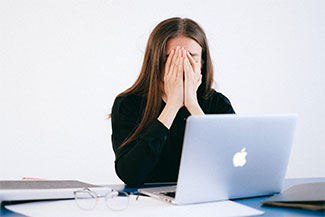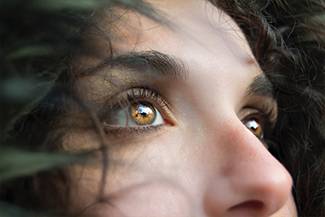
Electronic Devices And Dry Eye
Nowadays, screen usage has become a normal part of most people’s daily routine. Whether you use a smartphone, tablet, laptop, or other devices, the time you spend focusing on a screen can often be felt in your eyes.
Dry eye syndrome (DES) is an eye condition characterized by dry, uncomfortable, red, itchy eyes, and can be caused by several factors: poor quality tears, insufficient tears, allergies, environmental irritants, and spending excessive time staring at a screen. Left untreated, DES can cause corneal damage and scarring, and sometimes permanent vision loss.
If you think you have DES or are experiencing any of its symptoms, our The Dry Eye Center at Contact Lens and Vision optometric team can help.
How Using Electronic Devices Can Lead To Dry Eye Syndrome
Several studies have linked digital screen usage to symptoms of DES. While research is ongoing, it’s already known that the following factors all play a role.
Reduced Blink Rate
 Our blink rate is reduced by 66% when staring at a digital device’s screen. This finding is significant because blinking less frequently increases the risk of developing dry eye syndrome.
Our blink rate is reduced by 66% when staring at a digital device’s screen. This finding is significant because blinking less frequently increases the risk of developing dry eye syndrome.
Blinking is a major component in keeping the eyes feeling fresh and healthy. With every blink, the eye’s tear film is replenished and spread evenly across the eye’s surface. When that happens at a reduced rate, symptoms of DES can develop.
Even if you blink often enough, you may not be fully blinking, leaving a tiny gap between the upper and lower eyelids upon closure. This tiny gap causes a ‘dry spot’ on your cornea, which does not receive any replenished fresh tears and can compromise your eye comfort. So make sure that you fully shut your lids when you blink.
Recent studies have shown that incorporating a blinking exercise into your daily routine can reduce your DES symptoms. Consider setting up reminder that pops up on your screen every few minutes.
Reduced Tear Stability
A stable tear film keeps the eyes feeling comfortable and functioning optimally.
Mucin 5AC, a protein, is an essential component of a healthy tear film that helps the watery portion of the tears cling to the surface of the eye. A study in Japan found that employees who spent the most time in front of screens (7 or more hours per day) had the lowest amount of mucin 5AC in their tears. This led them to complained of DES symptoms, like itchiness and irritation.
The employees who endured the least amount of screen time from the group (less than 5 hours per day) had higher amounts of mucin 5AC in their tears, similar to those without DES.
Higher Rate of Meibomian Gland Dysfunction
The meibomian glands are the tiny glands that line the lid margin and secrete essential oils onto our tears. When these glands don’t function properly, an eye condition known as meibomian gland dysfunction (MGD) occurs.
MGD is an umbrella term for gland complications that can lead to an altered tear film composition, ocular and eyelid discomfort, evaporative dry eye, and ocular surface disease.
Studies have shown that people who spend 4 or more hours staring at a screen have higher incidences of MGD and DES symptoms.
So, What Can You Do To Protect Your Eyes?
Here are a few tips that may help you combat symptoms of DES when using a digital device:
- Take frequent blink breaks
- Use a cool-mist humidifier near your work station
- Avoid having a fan or air conditioner blow air directly into your face
- Stay hydrated with water, fresh fruit or vegetable juices, milk or soups
- Eat water-based dairy foods such as yogurts, smoothies, and oatmeal
- Use artificial tears or prescription eye drops if necessary
The most important thing you can do for your eyes is to visit a dry eye optometrist. At The Dry Eye Center at Contact Lens and Vision, we know how uncomfortable and even debilitating DES can be — and we’re here to help.
An eye doctor with specialized training and knowledge of DES can diagnose and treat the underlying cause of your condition and provide a range of effective, life-changing options.
To schedule your appointment and find the relief you need, call The Dry Eye Center at Contact Lens and Vision in Woodbridge today.
Our practice serves patients from Woodbridge, Edison, Freehold, and East Brunswick, New Jersey and surrounding communities.References













